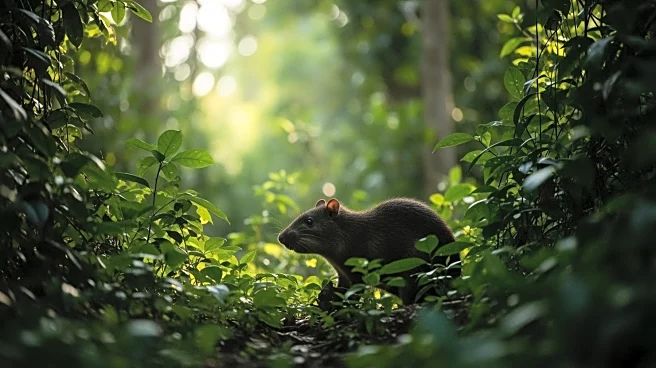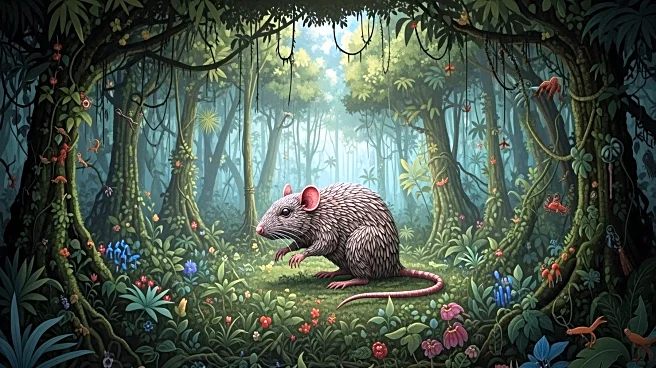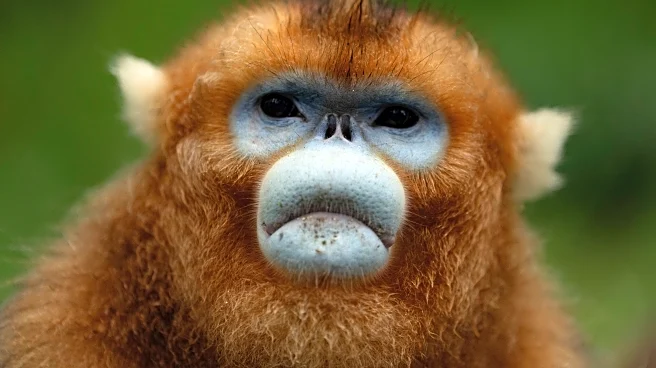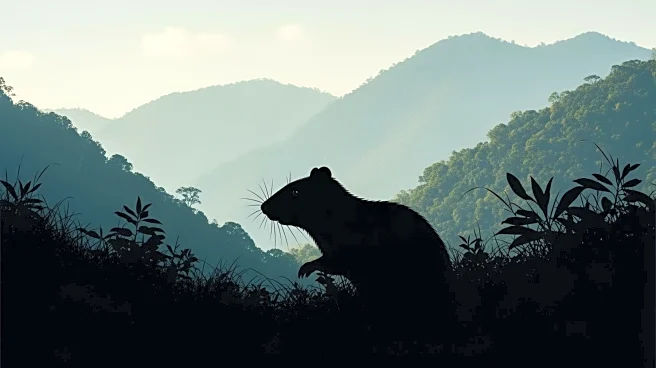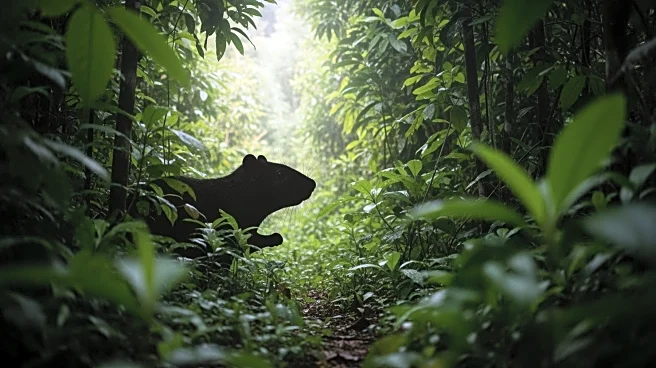What's Happening?
A giant woolly rat, thought to be lost for 30 years, has been rediscovered in the wilds of New Guinea. Czech researcher František Vejmělka documented the first-ever photographs of the Mallmys istapantap,
or subalpine woolly rat, which had only been known from archival data and museum skull collections since 1989. The rat was found in the rainforests of Mount Wilhelm, a remote area with little human access. Vejmělka's discovery was made possible through collaboration with indigenous hunters, who helped locate the elusive creature. The woolly rat is notable for its large size, measuring nearly 3 feet in length and weighing about 5 pounds.
Why It's Important?
The rediscovery of the giant woolly rat is significant for biodiversity and conservation efforts. It highlights the importance of field research in understanding and preserving species that are presumed extinct or rare. The finding challenges assumptions about the rat's rarity, suggesting that its perceived scarcity is due to the remoteness of its habitat rather than actual population numbers. This discovery underscores the need for continued exploration and study of tropical ecosystems, which may harbor other unknown or poorly understood species. It also emphasizes the role of indigenous knowledge in scientific research, as local communities can provide critical insights and assistance in locating and studying wildlife.
What's Next?
Following the rediscovery, further research is likely to focus on the woolly rat's ecology, behavior, and conservation status. Scientists may conduct additional field studies to assess the population size and distribution of the species, as well as its role in the local ecosystem. Conservation strategies may be developed to protect the rat's habitat and ensure its survival. The collaboration between researchers and indigenous communities could serve as a model for future conservation efforts, highlighting the value of integrating traditional knowledge with scientific inquiry.
Beyond the Headlines
The rediscovery of the woolly rat raises broader questions about biodiversity in remote and understudied regions. It suggests that other species presumed extinct may still exist, hidden in inaccessible habitats. This finding could inspire renewed interest in exploring and documenting the biodiversity of tropical mountains, which are often rich in unique and endemic species. Additionally, the discovery highlights the ethical considerations of working with indigenous communities, emphasizing the importance of respecting local knowledge and ensuring that research benefits both science and the communities involved.




